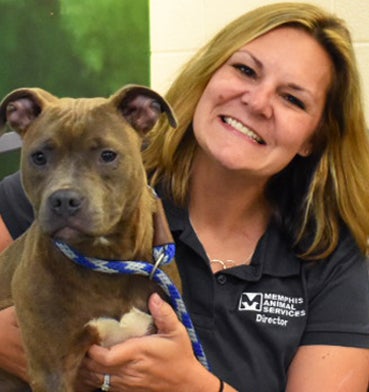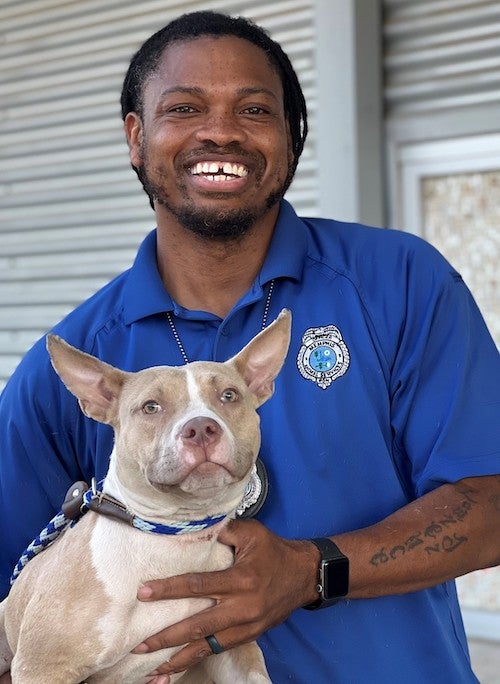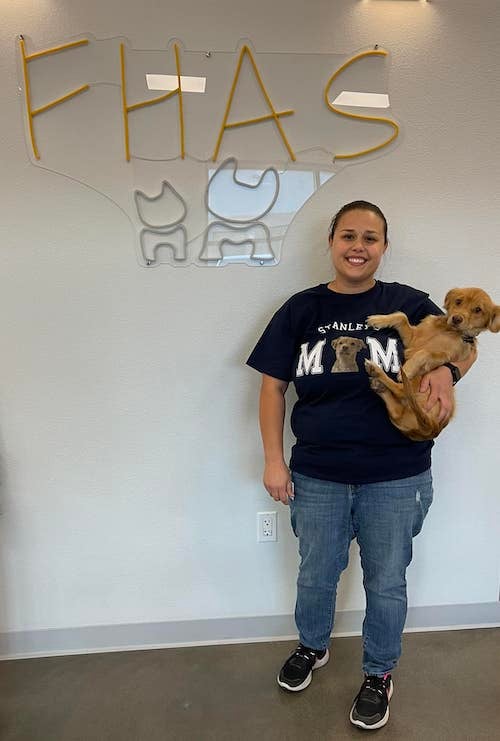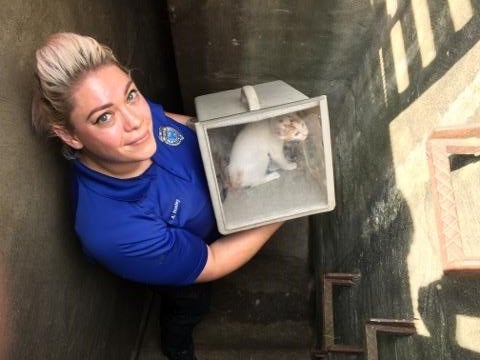
Acknowledging dispatch staff in honor of ACO Appreciation Week
April 4, 2023
April 9 through 15 is National ACO Appreciation Week, and we wanted to honor those amazing field officers who serve as the face of animal sheltering. But it also happens to be National Telecommunications Week, which makes our focus this week on dispatchers even more fitting.

Though many shelters have a well-structured dispatch system, there are still those organizations where one staff person takes phone calls during the hours the shelter is open. After-hours calls and those that come in while dispatch personnel are on another call go into a voicemail system, which then have to be triaged. That’s the system that was in place at Memphis Animal Services (MAS) when director Alexis Pugh came on board in 2016.
“It was literally one person sitting at a desk in a back room,” she says. “If someone called about an urgent situation and the dispatcher was on the phone with someone else talking about the neighbor's barking dog, the urgent case would get sent to voicemail, and it could take hours before the dispatcher got to them.”
In her work consulting with network partners on behalf of Best Friends, municipal and shelter support coordinator Anna Walton often encounters dispatch systems that receive few resources. Worse, they may not be considered an important enough component of field services to have dedicated standard operating procedures (SOPs), training, or adequate personnel.
That doesn’t mean a shelter has to start from scratch figuring out how a top-notch system should work. Anna regularly coaches shelters on building efficiencies into their processes. There also are plenty of materials available on our website and elsewhere to guide even those organizations that are severely strapped resource-wise in building out a better dispatch system, one capable of alleviating workload and providing a higher level of service to the community.
Making a case for outsourcing
Dispatch models exist both inside and outside of animal sheltering, most prominently within police departments via their emergency and non-emergency lines, and some organizations can outsource their calls into those systems. Alexis explored such an option at MAS for several reasons.
 “We weren't providing the level of service that this important work requires,” Alexis says. “We were not properly elevating the seriousness of some of the calls or stressing the importance of rapid response, particularly when it comes to a pet reunification situation or a sick or injured pet. We had to find a better way to urgently meet the needs of our citizens.”
“We weren't providing the level of service that this important work requires,” Alexis says. “We were not properly elevating the seriousness of some of the calls or stressing the importance of rapid response, particularly when it comes to a pet reunification situation or a sick or injured pet. We had to find a better way to urgently meet the needs of our citizens.”
More critically, since MAS had no designated dispatchers, they were forced to rotate light-duty officers into the role. Pulling an officer out of the field was clearly a poor use of such skilled staff.
“In an ideal world, we would have our own full dispatch center but that’s not possible with our budgetary constraints,” Alexis says. “To really make a call center effective, I'd have to have at least five people, if not more, to cover seven days a week, 24 hours a day.”
Alexis knew that outsourcing the work to the police department was an obvious solution – if they could handle the workload.
“I didn’t know what kind of capacity they had, but it turned out to be enough to absorb our work without adding an additional position,” she says. “Now every person who calls gets a live person on the phone, true priorities are entered into the system urgently and immediately, and we no longer must pull an officer away from their primary responsibilities. Plus, it was free for MAS.”
Keeping dispatch work in-house
Not every police department can take on thousands of additional calls a year, however. There are also some downsides to taking animal control dispatch services out of the sheltering world.
“The challenge with using 311 or 911 is that you do not typically have a call-taker with animal sheltering knowledge who can get to the bottom of the actual problem and input/dispatch the call accordingly,” says Nick Walton, national shelter support senior manager at Best Friends.

That’s been the occasional experience for Jana Huey, lead dispatcher at Fresno Humane Animal Services (FHAS), which uses a private answering service for after-hours calls. The results aren’t always ideal – or useful.
“I picked up a message from them on Sunday and it said a dog had been hit,” says lead dispatcher Jana Huey, who came to FHAS after 7 years dispatching for the Fresno County Sheriff's Office. “Well, I have questions: Is this dog dead or alive? When I reached the service to ask, she said ‘oh I forgot to put in that it was deceased.’ That is a huge piece of information to leave out.”
In addition to avoiding situations like the one above, dispatchers who understand animal sheltering can solve many situations with a simple conversation. Officers gain time to handle their existing calls as well as spend more time engaging with the community. That’s important as more communities embrace the idea of field officers operating more like public service officers.
“Dispatchers can advise callers about strategies they can try to find a stray animal’s owner themselves, help the caller with their community cat issues, and just screen and filter what comes through as needing officer assistance,” Nick says. “A good dispatcher will also ensure that officers are getting the necessary details to work a call properly and safely.”
Ensuring such details are correct and thorough comes with comprehensive training and robust standard operating procedures. Since Jana came on the job a year ago, creating both of those elements has been a big part of her job.
“At the sheriff’s office, dispatchers went through 6 months of training while here they were trained by current staff,” she says. “On my first day answering calls, the person training me stepped away briefly, leaving me to handle calls on my own. I can think under pressure, but I was filled with anxiety and self-doubt. I had a couple pages of notes, but there was still so much to learn. SOPs and consistent training provide a safety net I didn’t have.”
A dispatcher with confidence to answer any question also inspires public trust.
“If someone calls in, they know that they will be able to speak to the best person possible for the questions they have,” Jana says. “That cuts down on time being transferred from person to person, which requires more energy on their part to go over the situation again, which leads to frustration. If I'm frustrated with any business, I'm not likely to recommend them to anyone, and I might leave a negative comment on Facebook. I want to make sure that we do everything in our power to stay away from that.”
Tapping into tech tools
Don’t overlook technology’s role in bringing an outdated system into today’s world of animal sheltering. When MAS moved over to the police department system, the shelter’s IT department created process flow maps and an application programming interface (API) to push call info automatically into Shelterluv.
 “The API migrates details about what time the call came in, what time an officer responded, and the address, and officers can add detailed memos or attach images or documents,” Alexis says. “Our officers can look at a map or sort by priority codes, as well as put in a resolution code to mark a call for service as complete.”
“The API migrates details about what time the call came in, what time an officer responded, and the address, and officers can add detailed memos or attach images or documents,” Alexis says. “Our officers can look at a map or sort by priority codes, as well as put in a resolution code to mark a call for service as complete.”
The shelter was recently able to mirror 911’s texting system, too. If a welfare investigation call comes in, for instance, the caller will get a text that someone from MAS’s field officers will be in touch shortly.
“It also includes guidance on what to do next,” Alexis says. “Unless the animal is in immediate danger of dying, we tell them not to add anything to the location like food and water, and to document the situation with photographs. All these things help us get more information out to the citizens without requiring human effort, which reduces demand on human capacity.”
Anna also stresses the importance of tracking information that reflects the dispatch team’s work.
“If shelters have customizable software, they should set up a tracking system for the situations that are resolved over the phone,” she says. “Even just tracking that on an Excel spreadsheet can show the good work they are doing, however.”
Recognizing dispatchers as part of the team
Above all, dispatch personnel should be recognized for the role they play; they are an important part of the puzzle for high-quality animal control services.
“Dispatchers have a very difficult job, and often times they are thanked much less than officers (which is also not very much),” says Nick. “Incorporating dispatchers into the fold of daily operations should be a priority for every shelter in the country. A good dispatcher should be the gatekeeper for service calls, and their work directly impacts the save rate. Agencies should prioritize the dispatch position and celebrate them as the lifesavers that they are.”
Jana has a more metaphorical take:
“A good dispatch system is like a necklace,” Jana says. “Dispatch is the clasp, and the shelter is the ring that the clasp attaches to. The chain represents everything that the shelter offers. Sometimes that necklace becomes tangled, and it is dispatch’s job to work together, and problem solve to untangle those obstacles.”
Are you a network partner looking to improve your dispatch system? Reach out to your regional team member to discuss individualized training or help with SOPs.

Liz Finch
Senior Writer
Best Friends Network
If you enjoyed this program spotlight, you can find our complete catalog of spotlights here.